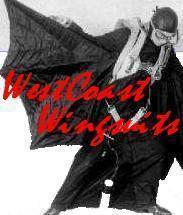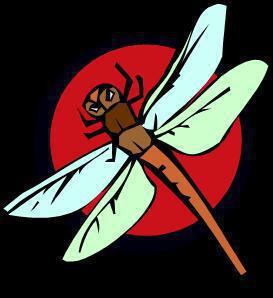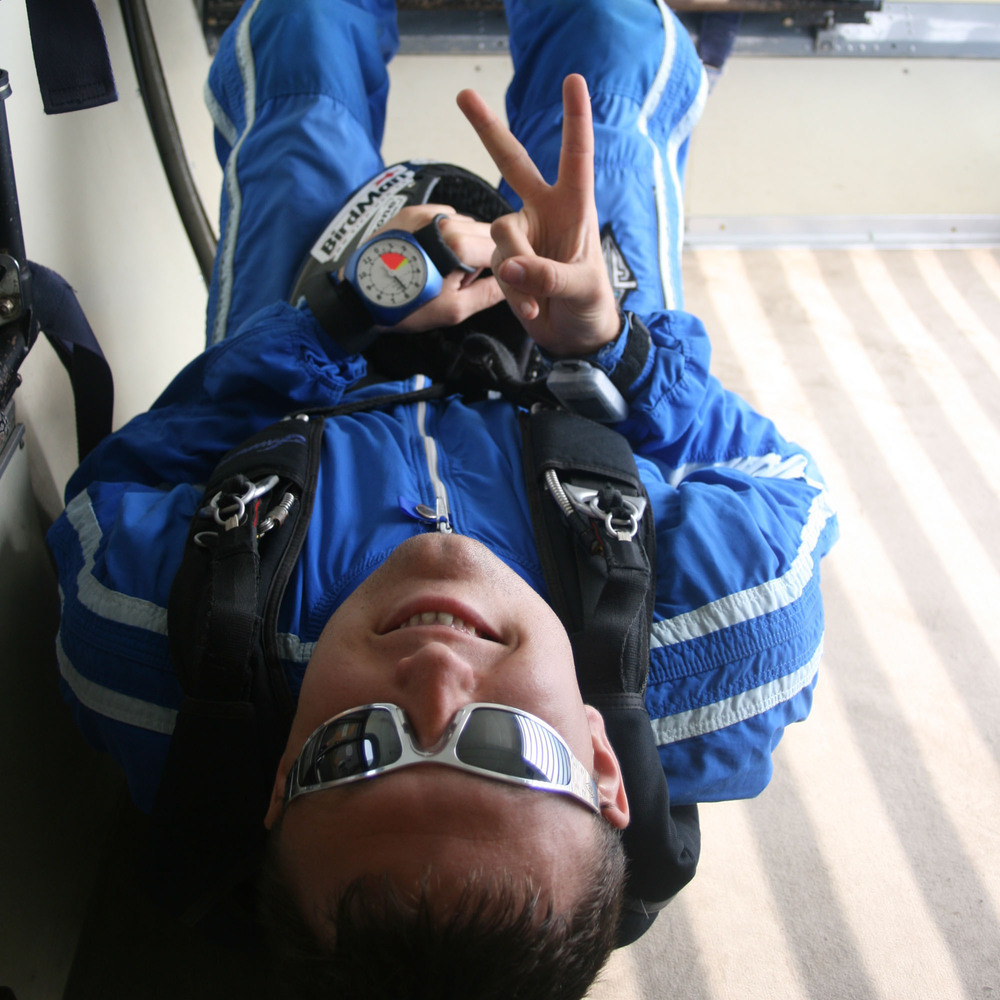Recommended Posts
dubbayab 0
Quote2. Since these standards may be an unnecessary burden in some individual circumstances, USPA provides procedures to document exceptions, known as waivers to the BSRs.
I guess what it's saying is that, if there is not a coach or an AFF rated Instructor on the DZ working the S&TA may "file a waiver" and let an experienced non rated jumper jump with the student.
-
www.PrecisionSkydiving.com
tombuch 0
Quote
I guess what it's saying is that, if there is not a coach or an AFF rated Instructor on the DZ working the S&TA may "file a waiver" and let an experienced non rated jumper jump with the student.
-
Well, I think the intent is to allow an S&TA to identify a jumper with experience who chooses not to get a rating, and designate that person as approved for specific levels of instruction. I don't think the intent is to suddenly "deputize" a jumper because there is a student on the DZ, but no available instructor.
For example, I may choose to allow a former instructor with a long expired rating to jump with students, after the students have demonstrated recovery from instability. Or, there may be a very experienced four way coach who is interested in getting involved in the student program, and I may approve him to jump with advanced students until he is able to get an instructional rating. In any case, I would want to sit down with the candidate and discuss modern student training and the DZ program, and some specific tactics for the training levels involved. I would not use the waiver authority for just any experienced jumper who "happened" to be available at the needed time.
Instructor Emeritus
Comm Pilot MSEL,G
Author: JUMP! Skydiving Made Fun and Easy
QuoteI may choose to allow a former instructor with a long expired rating to jump with students, after the students have demonstrated recovery from instability. Or, there may be a very experienced four way coach who is interested in getting involved in the student program, and I may approve him to jump with advanced students until he is able to get an instructional rating. In any case, I would want to sit down with the candidate and discuss modern student training and the DZ program, and some specific tactics for the training levels involved.
I guess if you wanted to take the work away for the current Instructors that are working at the time, that would be a choice....
-
www.PrecisionSkydiving.com
bch7773 0
Quote
BSR E(6) says:
a) All student freefall training for group freefall jumps must be conducted by a USPA coach under the supervision of a USPA instructor.
b) All students engaging in group freefall jumps must be accompanied by a USPA coach until the student has obtained a USPA A license This entire section may be waived by an S&TA.
so a student could do an 8 way with 1 coach and the rest are all non-coaches or non-instructors? is this the correct way of reading the BSRs?
MB 3528, RB 1182
obelixtim 150
If I have knowledge of this "Potential Instructor", his ability, experience, in depth knowledge..etc...etc....and he has been properly briefed by me...then I have no problem with them working with my students...usually one to one at first...with a more experienced student and then with fairly simple stuff to start with......
Of course I will be keeping a pretty close eye on him until I have confidence in him to do the right thing......then I will allow him to get more involved as his experience and confidence grows....under my direct supervision of course.....
The best way for someone to learn is to have hands on experience.....and I find these candidates evolve into much better instructors......
I have seen new instructors get their rating..then go straight in at the deep end and make many mistakes as they gain experience...not a good idea if they don't have a mentor keeping an eye on them.....and not a good idea with students who are relying on the instructor for their lives....
So I have no problem with people who are non rated helping out...but they need to be under supervision.....
The students of today are the instructors of tomorrow.......and every student is a potential instructor of the future....Todays generation of instructor arn't gonna be around for ever......and need to pass their experience on......
Simple common sense, I'd say......
tombuch 0
Quote
so a student could do an 8 way with 1 coach and the rest are all non-coaches or non-instructors? is this the correct way of reading the BSRs?
Quote
Technically, perhaps, but not really. Remember the decision to allow a non-rated instructor to jump with a student requires the approval and best judgment of the S&TA, so the S&TA should be watching out for the students safety interest. What you are proposing doesn't make any sense.
USPA actually provides specific guidance about the topic in SIM section 6-1-Group Freefall (page 119 in the 2004 SIM). See B(3): Initial training should begin with no more than two jumpers-the trainee and a USPA instructional rating holder. The specific training outlines for group freefall are included in the ISP categories G and H.
The entire USPA program is designed to safely train student with a nationally recognized standard. Deviations from that standard are allowed in some cases, but they need to be justified by safety and training concerns.
Once you get beyond the mandatory parts of the BSR's, an instructor or S&TA should use good judgment. I always assume something may go wrong, so I make sure that every decision I make can be justified in terms of student safety, and can be easily defended if there is a problem.
When I look at your proposal (rhetorical, I hope), I ask myself what would happen if the overloaded student and a non-rated jumper had a canopy collision, or if the student lost stability and dumped at 9,000 feet into another approaching jumper. Could I tell the surviving parents, children, friends and family, that the jump was reasonable? Is allowing such a jump something that another reasonable person with appropriate training would recommend? How would I justify my very clear deviation from published standards in the SIM?
When we think about students it's important to understand that they do not yet have the knowledge to analyze risk and offer an informed decision. It is really the instructors job to evaluate the risk of any specific jump plan, and to always error on the side of minimizing the risk, while still allowing for learning to take place.
One of the big differences between a well trained and experienced instructor and a regular jumper is the way they look at regulations and guidelines. A good instructor begins with an understanding that the guidelines are there to help both the student and instructor. Many experienced jumpers view the guidelines as a burden to be overcome through technical loopholes. A good S&TA will evaluate a non-jumper interested in working with students based on flying skill, but also based on judgment and understanding of a students limitations.Tom Buchanan
Instructor Emeritus
Comm Pilot MSEL,G
Author: JUMP! Skydiving Made Fun and Easy
wsinsel 0
While both of you have compelling arguments for allowing non-rated people to assist with training under certain circumstances, I don't believe either of you would simply allow, without any sort of "check dive", what the original poster proposes in the other thread they started (also called "students"). There is a big difference between allowing a very qualified potential instructor to assist with CATs F,G,and H (under supervision of the CI/S&TA) and letting a person's unrated freeflyer boyfriend train them just to save money.
As a former school manager and S&TA, I can tell you that I would not allow some un-tested, never-rated individual to be working with any of my students. Now, if there were some compelling reason why a bonafide "potential instructor" simply had not been able to make it to a course, then I would take him/her up and do the two coach eval dives with them and, if they passed, I would probably waiver them and allow them to work.
Chuck
tombuch 0
QuoteWhile both of you have compelling arguments for allowing non-rated people to assist with training under certain circumstances, I don't believe either of you would simply allow, without any sort of "check dive", what the original poster proposes in the other thread they started (also called "students").
Correct. The key is judgment, and what is proposed in the other thread is flat out wrong.
Instructor Emeritus
Comm Pilot MSEL,G
Author: JUMP! Skydiving Made Fun and Easy
riggerrob 643
We are serious about only allowing junior jumpers to do freefall formations with Coach 2s.
Our manifest is set up to encourage full employment of Instructor Bs. Once they (IBs) are fully employed, they can hand off students to more junior coaches, but an Instructor must still approve the dive flow.
Don't waste my time asking me if you can jump with your boyfriend until AFTER a Coach 2 has approved you for freefall formations bigger than 2 way.
PhreeZone 20
I've seen pre-A licence jumpers have to do weekend after weekend of solos since there are no rated coaches, but there are 2 or 3 expired rating holders on the ground that could do the work just fine (and would be legal if they wanted to do Tandems again)
The way I've seen things work is now that you need the coach rating to get to be TI is that if you ever want to give up your TI rating you usually have to give up your Coach rating too.
And tomorrow is a mystery
Parachutemanuals.com
QuoteHow about allowing someone with expired ratings do one off jumps while the rest of the staff is way over worked?
I've seen pre-A licence jumpers have to do weekend after weekend of solos since there are no rated coaches, but there are 2 or 3 expired rating holders on the ground that could do the work just fine (and would be legal if they wanted to do Tandems again)
The way I've seen things work is now that you need the coach rating to get to be TI is that if you ever want to give up your TI rating you usually have to give up your Coach rating too.
IMO, if the skydiver that has been too lazy or uninterested in keeping his rating current, why should they all the sudden be ok to take the student on jump?
Staying focused and current to what the student needs is a big part of holding a rating, and someone that is not going to take the time or effort to keep something as simple as a coach rating has no business jumping with a student.
-
www.PrecisionSkydiving.com
Chuck
obelixtim 150
I am not limiting my scenario to AFF only though.....SL certainly offers more control over supervision......
My "Potential Instructors" would also have to have had plenty of practise with intermediate level jumpers and proved to me their credentials over quite a period of time.....
With AFF you stick to the requirements totally.....just as you wouldn't allow an unrated person to do a tandem jump as a TI.
No way would I let a non rated person deal with my students independantly.
If the student was basically already through the programme and reasonably independant........then I think if I was happy with things I wouldn't have a problem.......
I've seen a number of people with ratings that they've held for years who are total dolts......sad to say they are out there still doing damage, so a rating doesn't always equate with competance..........




I think this is because tandems were considered Expermintal untill of late. Now any Instructor can jump with any student as long as that student has been cleared for freefall self supervision by an appropatle raited Instructor in the students field of training.
ie....Aff with 21 jumps can make a freefall with a Tandem Instructor, and actually do an A license cherck dive with a IAD Instructor.
I'll go to the USPA web sight and look it up for a current copy, I do not believe TOM would make it up.
As of late the SIM has been revised every year, and I believe they may have granted this power of excutive to S&TA.
Share this post
Link to post
Share on other sites